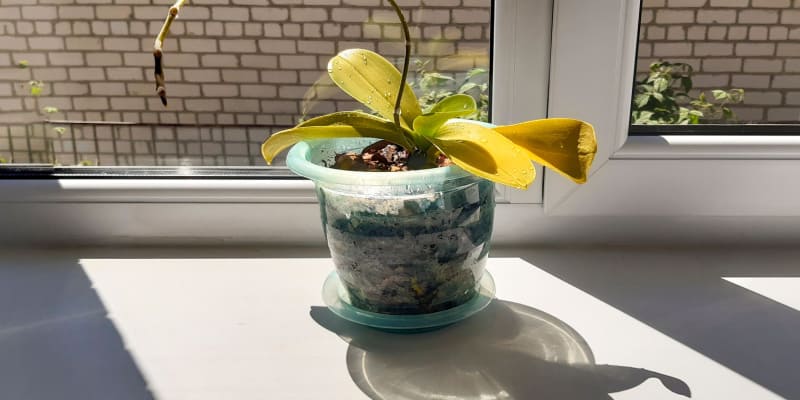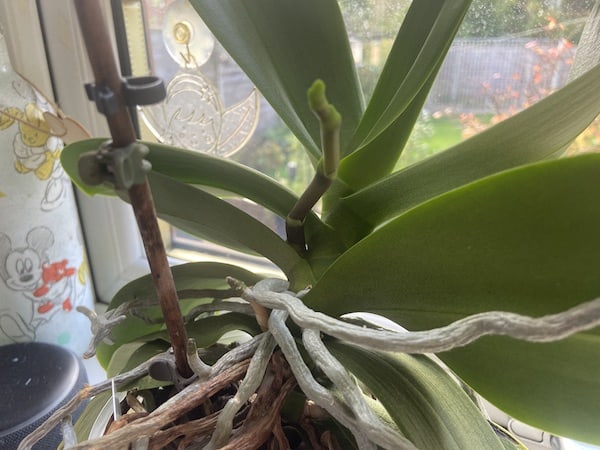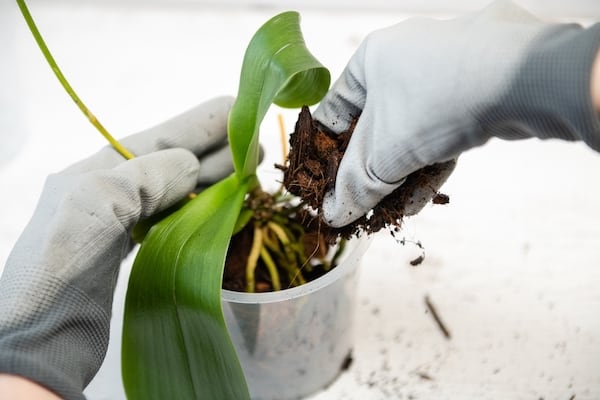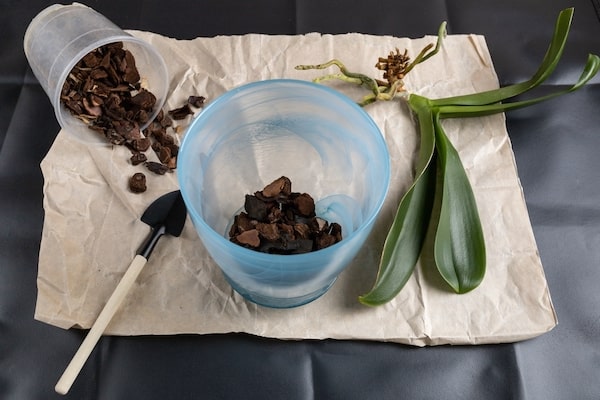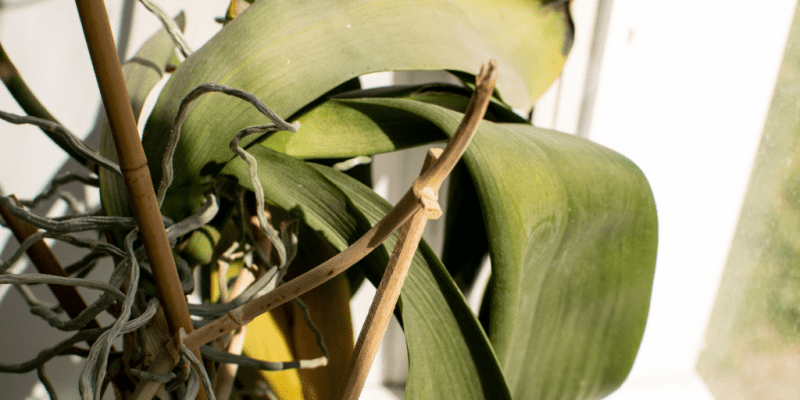
How to know if you’re overwatering your orchid? – Seven signs
Our site is reader supported, this means we may earn a small commission from Amazon and other affiliates when you buy through links on our site.
It’s not so easy to tell if you’re overwatering your orchid, as some of the results are the same as if you’re under-watering the plant. However, the most obvious and most common signs of over watering from my experience are the leaves becoming limp, often crinkled in appearance and almost leathery, with the established leaves becoming yellow. That being said, there are manny more signs so read on to learn more.
Read on to find out seven signs that you’re overwatering your plant.
How often to water your orchid
I’ll start with one of the most popular questions about watering your orchid. The general rule is to water the orchid when the top of the potting mix becomes dry. But all orchids have their own individual needs, yours included. My When and how to water your orchid contains more information about this matter and Should I water an orchid with ice cubes? introduces a new way of keeping your orchid hydrated which could be worth considering.
Here are seven signs of overwatering to look out for in the various parts of the plant.
Checking the leaves for overwatering symptons
Healthy orchid leaves are yellowish green, shiny and firm. Don’t expect the deep green colour of other houseplants, though.
Leaves on your orchid are yellow and wilting
The roots of over- and under-watered plants can’t transport water and nutrients to the rest of the plant. The leaves become yellow and wilt to conserve whatever moisture they have.
Got a orchid with yellow leaves not overwatered? check this guide here
Leaves are limp and leathery
The leaves of some species of orchids will acquire a feel like leather and then turn limp instead of wilting. Be on the lookout for any leaves that seem thicker than normal. This is one of the most common signs of overwatering, but not to be mistaken for plants that have not had enough water.
Something not look right with the roots of your orchid?
The roots are whether you can definitely tell if you’re overwatering your orchid. healthy roots are firm and either white or silvery-green, maybe a little grey. If you’ve just watered your orchid, the roots should be bright green.
But I’m talking here about the roots inside the container. Don’t rely on the aerial roots to judge the health of your plant. This is because they always seem to look dry.
Roots are brown and mushy
Gently slide the roots out from the plant pot. If they’re dry and brittle, you’ve not given your orchid enough water. But if the roots are brown and squishy, that’s due to overwatering.
If the roots are really squishy all the way, your plant probably has root rot. You can try treating this fungal disease, but it’s hard to recover from. I talk about how to prevent and treat root rot in orchids here.
Stems
Healthy stems on your orchid should be green and firm. Anything else is the sign of a problem.
Stems are yellow or brown
If your plant stems are yellow or brown, this could be a sign of overwatering your orchid. Gently squeeze the stem between your thumb and index finger. If it feels soft, chances are that the root rot from the roots has spread upwards to become stem rot. There’s pretty much nothing you can do for your plant at this time except discard it.
Potting mix and container
Although not a part of the plant, the orchid potting mix and the orchid pot are essential parts of its growing environment. And you can tell if you’re overwatering your orchid by feeling how much moisture is in the potting mix.
Not using a specialist mix
If you haven’t used a specialist orchid potting mix, then you’ve definitely been overwatering your plant. Regular potting mix, even for houseplants, is to think and compact for the more delicate orchid roots (that grow in air). Regular soil becomes waterlogged and leads to overwatered roots and root rot. See, Do orchids need special soil? for more details about what to use. Spoiler alert, just use specialist orchid compost.
Too many soggy ingredients in potting mix
Even if you use an orchid potting mix (either a store bought mix or one you put together yourself), you may have the wrong mix of ingredients for your particular orchid.
Some of the ingredients in the mix such as moss and permeable clay hold on to water for a while. Too many of these water-loving components can make the overall mix very wet and it may become waterlogged. This results in the roots being unable to take in oxygen and to transport water and nutrients up to the plant.
If your potting mix feels too wet, take out some of the water-filled parts. Perhaps replace them with impermeable inorganic elements that drain water away quickly.
Potting mix is wet
Check the number of drainage holes in your orchid pot. If you only have one or two in the base, then you could be overwatering. Even if you use just a reasonable amount of water, the excess moisture has nowhere to drain through and so sits there.
Swap out your pot for one with drainage holes in the sides. Look also for a pot with a raised bump in the centre of the base that helps with aeration and air circulation.
You can learn more about orchid pest and diseases here, why they might not be blooming here and why your orchid might have brown leaves
